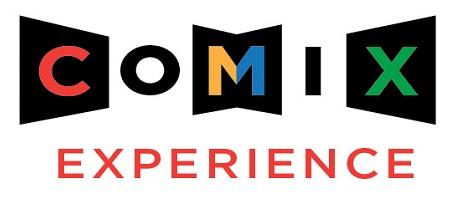Johanna Reads 7/18: Captain America, The Order, The Spirit
/![]() Something you'd better learn now -- I suck at titles. My apologies for not being as creative as the others or knowing as many song lyrics.
Captain America #28 -- I think this is what's meant by superhero comics for adults. Writer Ed Brubaker attempts to tackle weighty issues through expository conversation, even when those debating are wearing gaudy spandex.
Something you'd better learn now -- I suck at titles. My apologies for not being as creative as the others or knowing as many song lyrics.
Captain America #28 -- I think this is what's meant by superhero comics for adults. Writer Ed Brubaker attempts to tackle weighty issues through expository conversation, even when those debating are wearing gaudy spandex.
There's the hero left behind vowing to find out what really happened to Captain America, shot dead; telepathic erasures; and a sadistically violent robbery (welcome only because it provides some red to the comic's dark color palette). Mostly it's talk, talk, killing time until it's time for the next sales-spike gimmick event, which we all know will be the hero's return.
It's one of the few superhero titles I read, because it is as well-done as it can be, but it still seems to me a bad match in attempted content and trappings, like forcing a nuanced political debate into a Harlequin. Long-time readers may find the variety intriguing, but for those looking for lighter entertainment, it's visually dull. (Art is by Steve Epting and Mike Perkins with gloomy color by Frank D'Armata.) I give it an Okay, although that would drop if we're rating for non-direct market fans.
The Order #1 -- Previously "The Champions", until Marvel was forced to realize they no longer had the trademark. (Given how often they've been legal bullies, seeing them knocked down a peg tickles me more than it ought, especially since this particular battle is meaningless in the bigger scheme of things.)
Matt Fraction introduces a new superhero team (because there aren't enough of those already). I gave it a try because I hoped it'd be a good starting point for someone not particularly interested in the bigger universe. (Although the Initiative banner across the top was a turn-off ... I don't know what it means other than "we want you to buy more comics you may not be interested in just because of this label".)
The premise is that a group of volunteers are turned into heroes with a huge publicity budget. Others have compared it to X-Statix already, although it doesn't have that sense of parody and ironic reserve.
I agree with the commenter who got a Strikeforce Morituri vibe from it. I don't think death is as certain as it was in that series (where it was part of the premise), but I do think they're aiming for that "anything can happen to these characters because they're not franchised" feeling. The marketing slant also reminds me of the Conglomerate from Justice League Quarterly because I was a DC girl.
It starts with some guy who "played Tony Stark on TV" narrating, in a way very reminiscent of Max Lord. A writer can't help it, really -- everything looks like something else given the amount of history they're struggling under. Here, the pantheon idea is explicit, with the young heroes given codenames of particular Greek gods.
Barry Kitson's art is less stiff than it was on The Legion of Super-Heroes and attractive (inked by Mark Morales and colored by Dean White). The book's biggest problem is that 20-something pages aren't enough to introduce a team and all the many supporting characters, pull a switch, set up the premise, and establish a cliffhanger we care about. To launch a team effectively, you need double or triple the space, but who's going to take a chance on the extra cost when there are known and familiar quantities out there? It got an Eh and two Goods from other Critics, and I'm afraid I'm leaning towards the Eh myself.
With the conditions Fraction's working under, it's neat that he does as much with it as he can here, but there's no reason driving me to buy another issue, no character I'm interested enough in to want to see more of, nothing that flips that "I'm looking forward to reading more" switch (especially with so many other options out there).
The Spirit #8 -- Now this is the kind of superhero comic an adult can read. No continuity needed, although if you remember previous stories the events will have more depth. Otherwise, everything's on the page, and the jokes work because of human nature, not because of shared reading lists. Action, adventure, suspense, romance, comedy -- all the biggies, all included by incredibly skilled craftsmen with an unique look (Darwyn Cooke, with finishes by J. Bone and color by Dave Stewart).
Through some machinations it's not necessary to go into (because really, this kind of thing happens all the time in this world), the Spirit and the way-cool spy Silk Satin are trapped with a nuclear bomb counting down to detonation. As if that isn't enough of a nail-biter, the government wants to destroy the whole thing -- with the two inside -- and Satin's the worse for wear after a blow to the head.
It's such a pleasure to see talented work tell a story that wraps up in one issue and still shows key qualities of the characters with significant emotional impact. This is a Very Good comic.











